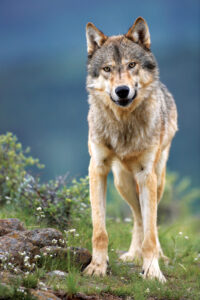Keystone species examples come in many shapes and sizes. Some are big (grizzly bears), some are small (starfish), and some are vegans (elephants). Learn more about keystone species and the entire ecosystem in which each lives.
The day came clouded and wind-tossed, with 5 inches of fresh snow in the valley and a lot more piling up overhead on the peaks. It was early December in Montana in Glacier National Park. Although winter wouldn’t officially start for another two weeks, blizzards and bitterly cold temperatures had long since sent the bears into their dens.
But not every bear.
Very large, very fresh paw prints on the trail in front of me said at least one grizzly wasn’t ready to call it quits for the year.
Sleeping in underground dens keeps bears safe and insulated through the snow-smothered months while they live off reserves of fat. The biggest and most powerful ones — adult male grizzlies — sometimes leave their hidden chambers to roam about during midwinter thaws. Before, few naturalists realized these heavy-bodied bears could stay out through much colder conditions as long as they were able to take in more energy from food than they burned trying to find it. Then wolves returned to the American West.
The Food Web Surrounding Wolves
After an absence of half a century, wolves came back to Glacier during the 1980s, trotting across the border from neighboring Canadian wildlands. Suddenly, this Rocky Mountain landscape held more carcasses of deer, elk and moose, and those of us who frequented the slopes began to discover a few scavenging grizzlies later and later into the frozen season. One valley, with prime wintering grounds for hoofed herds, hosts a big male silvertip grizzly that I’m not sure ever holes up to snooze anymore.
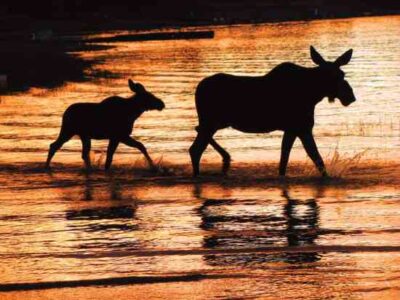
Wolverines, with their unsurpassed nose for leftovers, can find more meals now as well. So can wintering bald eagles and golden eagles, along with northern ravens, which often follow wolf packs on the prowl. Wildlife biologists tracking the wolves discovered them taking over fresh kills made by mountain lions. In many cases, the packs seemed to be honing in on the sight of circling ravens or the birds’ excited calls in order to find the stealthy cats and drive them off their prize. Before wolves were reintroduced to Yellowstone National Park in the mid-1990s, cougars had expanded their range to include broad valley bottoms. After the wolves’ return, the cougars retreated to the steeper, more broken upland terrain they had normally hunted.
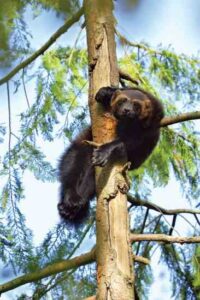
Animals ranging from jays and magpies to martens and black bears glean scraps from wolf-killed carcasses. Coyotes are on that list of opportunists as well, but the wolves are lethally intolerant of their closest kin. In fact, Yellowstone’s new wolves quickly reduced the number of resident coyotes by nearly half, and forced survivors to take up life in smaller, more scattered territories. Coyotes behave much the same way toward their smaller relatives, suppressing the numbers and territories of foxes. So, where wolves move in, coyotes end up marginalized while foxes thrive. That in turn shifts the odds of survival for coyote prey such as hares and young deer, as well as for the small rodents and ground-nesting birds the foxes stalk. These changes affect how often certain roots, buds, seeds and insects get eaten, which can alter the balance of local plant communities, and so on down the food chain all the way to fungi and microbes.
Trophic Cascades: The Trickle-Down Effect
Ecologists commonly depict the structure of natural communities as a pyramid. The different layers are known as “trophic” (or feeding) levels. Green, solar-powered organisms — plants — form the foundation. On that broad base of primary producers rest layers of vegetarian species. Meat-eaters then stack up in smaller blocks above the herbivores until only the predators that have few or no predators themselves remain at the pyramid’s peak.
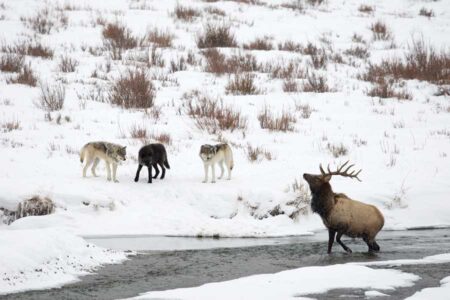
Experts used to assume the overall richness of an ecosystem was determined by bottom-up influences — that is, by the fertility of the soil, climatic conditions such as annual precipitation, disruptions such as flooding or wildfire, and other environmental factors that bear upon plant growth. Only recently did researchers begin to notice how the addition or removal of a dominant predator — say, a jaguar or killer whale — reverberates through all the lower layers of the pyramid. This top-down effect is known as a “trophic cascade.” Picture water spilling from a point source: The main flow fans out as it descends, splitting and splitting again, with a few streams jetting away to one side or another, then flowing on in more rivulets and arcs of spray.
Wolves are one such predator. This endangered species’ natural recolonization of the Glacier Park area and subsequent reintroduction to Yellowstone sparked an array of close scientific studies, and the results are an ongoing revelation. At the start, the elk in Yellowstone were, in the view of many experts, overpopulated and degrading their range. Herds practically camped in areas such as brushy wetland meadows and riverside flood plains, concentrating on favorite foods such as willow, aspen and cottonwood. Over the years, those woody plants became pruned into misshapen bonsai forms by elk teeth. Finding a young one taller than shoulder height was rare. In quite a few places, the aspen stands were no longer reproducing at all. Some had already died out.
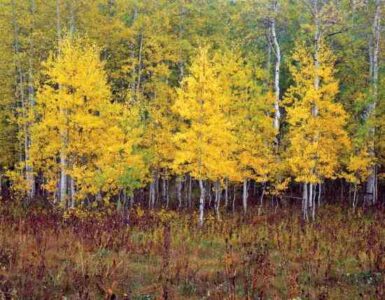
Predictably, after the wolves arrived, their population grew while elk numbers fell. Yet within a decade, the wolf and elk populations started to approach equilibrium. Lately, wolves have actually declined in Yellowstone, partly because food is no longer as readily available, partly from disease, and partly because wolves limit their own density within a given range through deadly fights over territories. From the standpoint of the ecosystem, the most important impact wolves had on Yellowstone elk was not simply readjusting the size of herds, but also causing them to spread out into different areas and keeping them on the move.
Relieved from the pressure of constant browsing, long stems shot up from the clubbed-looking shrubs and trees. New saplings arose from ground level. Groves thickened, attracting more songbirds and small mammals. The roots of recovering vegetation stabilized the shores of waterways. Lured by the flourishing woody plants, beavers moved in and raised families. Their dams further countered stream bank erosion, and at the same time created new pond and marsh habitats for moose, otters, mink, wading birds, waterfowl, fish, amphibians and more. Lush regrowth along the edges drew still more songbirds, and the burgeoning supply of insects fed nestlings. The insects dropped off overhanging leaves into the waterways, nourishing trout as well.
As these trends continue into the future, entire watersheds will become more productive and able to support a wider diversity of species. They’ll also become more drought-resistant, with runoff water stored in beaver ponds and side channels able to help maintain streamflows through the hottest, driest months.
Glacier Park has denser, more varied forests where white-tailed deer abound, so the wolves there haven’t been as tightly focused on elk. Just the same, the recovery of some heavily browsed sites has been as dramatic as in Yellowstone.
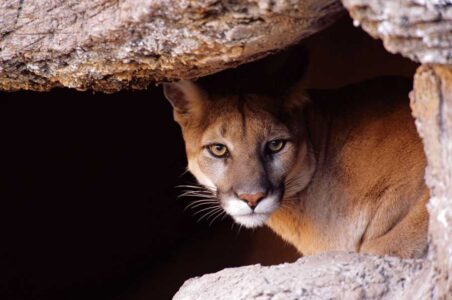
Long reviled as beasts of waste and desolation, wolves are looking more and more like creators of abundance and stability. Squint a bit, and you may even see generations of wolves in the keen senses and grace of elk, in the long-legged bulk and power of moose, in the electric reflexes of deer. Or, as poet Robinson Jeffers put it: “What but the wolf’s tooth whittled so fine / The fleet limbs of the antelope?”
Surprising Keystone Species
A trophic cascade doesn’t always have to involve a top predator. Back in the late 1960s, zoologist Robert Paine removed the starfish known as “ochre stars” from sample areas on the coast of Washington state. Active, aggressive hunters, ochre stars gorge on mussels. Lose that single predator, and thick beds of rapidly proliferating mussels take over, squeezing out barnacles, algae, snails, sponges, tube worms, sea squirts, and the rest of the remarkable mix of marine life usually at home in the intertidal zone. With ochre stars, Paine introduced the idea of a “keystone species,” defining it as one that exerts an outsized effect within an ecosystem, not necessarily through sheer size, number or biomass, but because of the pivotal role it plays.
Sea otters aren’t quite at the apex of the food chain along the North Pacific coast, for they can fall victim to sharks and killer whales. However, the otters dine on a smorgasbord of mollusks, crustaceans and, most of all, sea urchins. With the densest fur of any animal — 650,000 hairs per square inch — they were once hunted to near extinction for their pelts. Not long afterward, people noticed kelp beds that had served as the otters’ preferred habitat turning quite sparse or vanishing altogether. With the otters gone, it turned out, an exploding urchin population was gnawing its way through those submarine thickets of giant algae. Producing as much organic material per acre as tropical rain forests, kelp forests serve as sheltering nurseries for all kinds of juvenile fish, including commercially valuable species. Where kelp was most abundant, humans harvested it to make additives for products from soap and fertilizer to ice cream and jelly. Here, then, was a trophic cascade that tumbled down through unexpected levels and then washed onto us.
Vegans as Ecosystem Engineers
In another type of trophic cascade involving a keystone species, the lead role is played by a vegan: the African elephant. Consuming upward of 400 pounds of plants per day in the case of large males, these titans rip down tree limbs for meals, girdle tree trunks by stripping off nutritious bark, and simply push smaller trees over to get at the branches. As for shrubs, elephants not only eat the stems but tear whole plants to pieces, uproot others and trample still more underfoot while foraging.
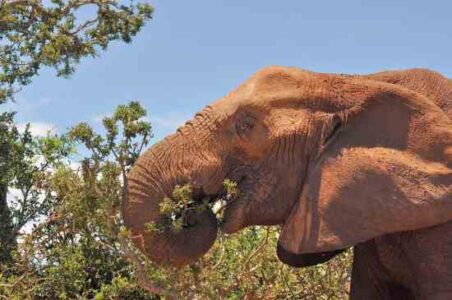
When fully grown, elephants are virtually immune to predators, and herds tend to increase until checked by drought, food shortages or disease. At high population levels, their quest for food can transform wooded habitats into open plains. In cooperation with wildfire, elephants also maintain existing savannas by removing the woody plants that inevitably invade grasslands. Elephants shape the woodland-savanna balance in an ecosystem by determining the proportions of grazers such as gazelles, zebras and wildebeest to woody plant browsers such as giraffes and kudus, and of lions prowling the plains to leopards waiting to pounce from an overarching tree limb. That is, elephants shaped the communities in which our primate ancestors developed, stood upright and started walking toward the future.
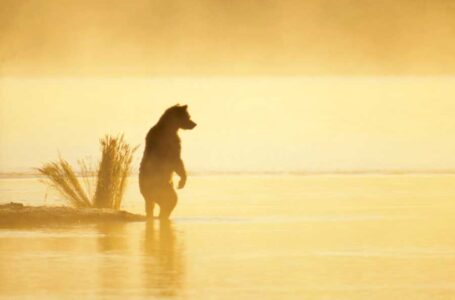
Ecologists sometimes refer to elephants as “ecosystem architects” or “ecosystem engineers.” Here in North America, grizzlies serve the same function. In addition to their effects as predators and scavengers of hoofed animals, the big bears fertilize streamside habitats with their waste and the remains of the salmon they eat. (Both are rich in nitrogen and other essential nutrients.) Grizzlies also distribute thousands of seeds from shrubs after eating the berries, and they rank as the chief animal earth-movers of the upper elevations in portions of the Rockies. Excavating acre upon acre to get at hibernating rodents and the bulbs and starchy roots of various herbs, they bring up nitrogen from deeper soil levels just as a farmer does when tilling fields. The seeds that fall into such freshly turned soil yield a more robust crop of new alpine and subalpine plants than seeds in undisturbed patches. Next time you’re on a trail in grizzly range, instead of recalling some cheesy horror movie scene involving monster bruins, try thinking “heavyweight wildflower gardeners.” It can’t hurt.
Nature Is a Community
Everyone seems to have an opinion on ecology these days. Keep in mind, though, how new this field of science actually is, and how much all of us have yet to understand. Henry Ford had invented the automobile before biologist Ernst Haeckel even coined the term “ecology” early in the 20th century. The word didn’t enter popular vocabulary until the 1960s.
Feeding-level pyramids, top predators, trophic cascades, keystone species, ecosystem engineers — these are all different expressions of the central fact that everything in an ecosystem is connected to everything else. A natural community is by no means just a collection of individual species. Its vitality comes from the relationships between those organisms — the interactions, the flow of energy and nutrients from each life to the next.
Comparatively rare to begin with, most of the world’s apex carnivores are imperiled at present, and many keystone species are also at risk. There may be no more important lesson from the young science of ecology than this: If we want to keep ecosystems healthy and resilient, the first step is to pay closer attention to the way nature does this from the bottom up, and back down again from the top.
Douglas H. Chadwick is a wildlife biologist and the author of 11 books — most recently, The Wolverine Way (Patagonia Books, 2010) — and hundreds of magazine articles on natural history and conservation. He conducts research on wolverines as a volunteer in Glacier National Park and serves as a founding board member of the conservation land trust Vital Ground.

